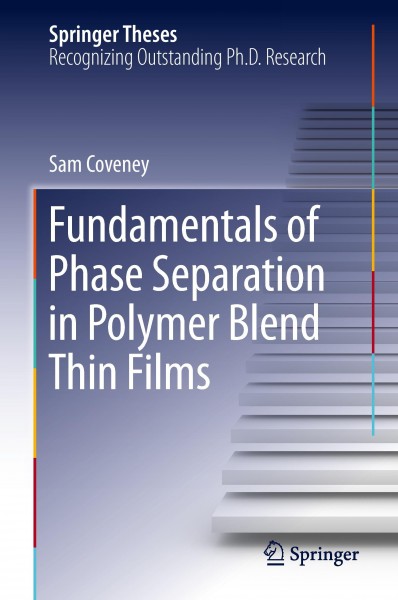
Fundamentals of Phase Separation in Polymer Blend Thin Films
Kurzinformation
inkl. MwSt. Versandinformationen
Artikel zZt. nicht lieferbar
Artikel zZt. nicht lieferbar

Beschreibung
This work sheds new light on fundamental aspects of phase separation in polymer-blend thin films. A key feature underlying the theoretical models is the unification of one-dimensional thermodynamic phase equilibria with film evolution phenomena in two- and three dimensions. Initially, an established 'phase portrait' method, useful for visualising and calculating phase equilibria of polymer-blend films, is generalised to systems without convenient simplifying symmetries. Thermodynamic equilibria alone are then used to explain a film roughening mechanism in which laterally coexisting phases can have different depths in order to minimise free energy. The phase portraits are then utilised to demonstrate that simulations of lateral phase separation via a transient wetting layer, which conform very well with experiments, can be satisfactorily explained by 1D phase equilibria and a 'surface bifurcation' mechanism. Lastly, a novel 3D model of coupled phase separation and dewetting is developed, which demonstrates that surface roughening shadows phase separation in thin films. von Coveney, Sam
Produktdetails

So garantieren wir Dir zu jeder Zeit Premiumqualität.
Über den Autor
This work sheds new light on fundamental aspects of phase separation in polymer-blend thin films. A key feature underlying the theoretical models is the unification of one-dimensional thermodynamic phase equilibria with film evolution phenomena in two- and three dimensions. Initially, an established 'phase portrait' method, useful for visualising and calculating phase equilibria of polymer-blend films, is generalised to systems without convenient simplifying symmetries. Thermodynamic equilibria alone are then used to explain a film roughening mechanism in which laterally coexisting phases can have different depths in order to minimise free energy. The phase portraits are then utilised to demonstrate that simulations of lateral phase separation via a transient wetting layer, which conform very well with experiments, can be satisfactorily explained by 1D phase equilibria and a 'surface bifurcation' mechanism. Lastly, a novel 3D model of coupled phase separation and dewetting is developed, which demonstrates that surface roughening shadows phase separation in thin films.

- hardcover
- 415 Seiten
- Erschienen 2009
- Wiley-VCH

- Hardcover
- 854 Seiten
- Erschienen 2019
- Carl Hanser Verlag GmbH & C...

- Taschenbuch
- 424 Seiten
- Erschienen 2006
- Wspc

- Hardcover
- 544 Seiten
- Erschienen 2013
- Cambridge University Press

- Hardcover
- 296 Seiten
- Erschienen 2015
- Oxford University Press Inc

- Hardcover
- 432 Seiten
- Erschienen 2012
- John Wiley & Sons Inc

- Hardcover
- 464 Seiten
- Erschienen 1998
- World Scientific Publishing...

- Hardcover
- 392 Seiten
- Erschienen 2015
- Wiley-Blackwell





 bestellen
bestellen
























